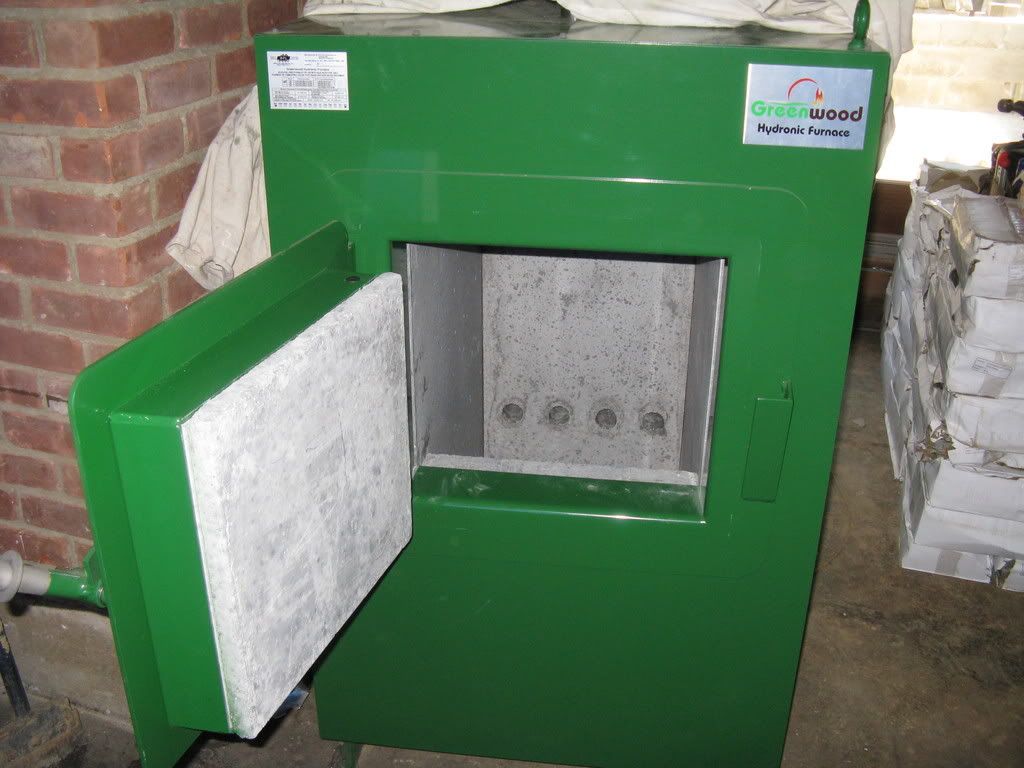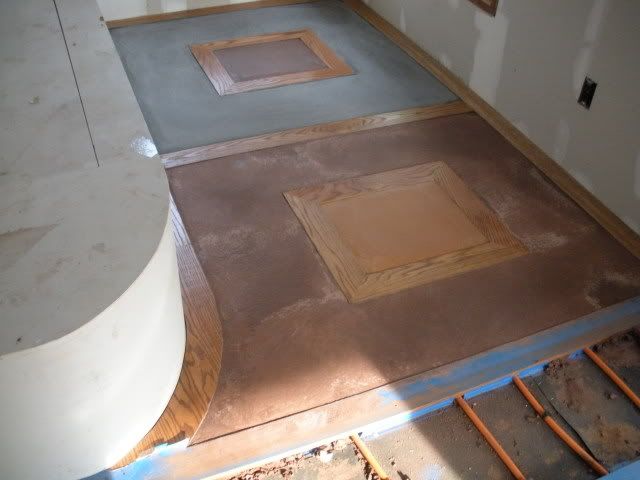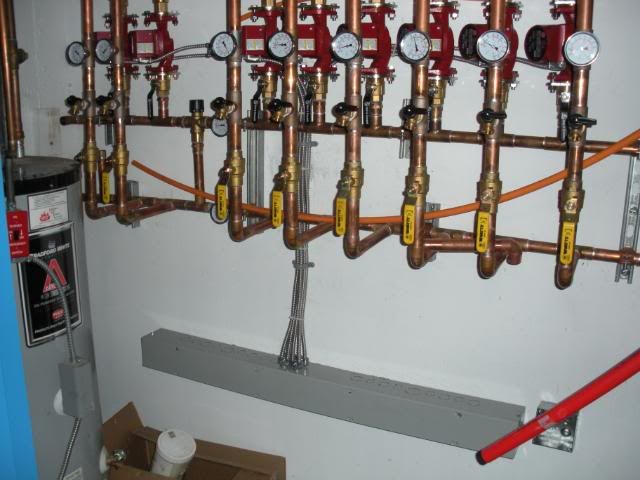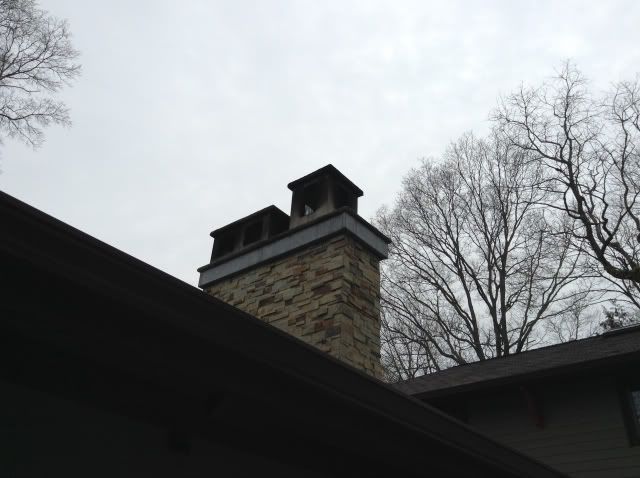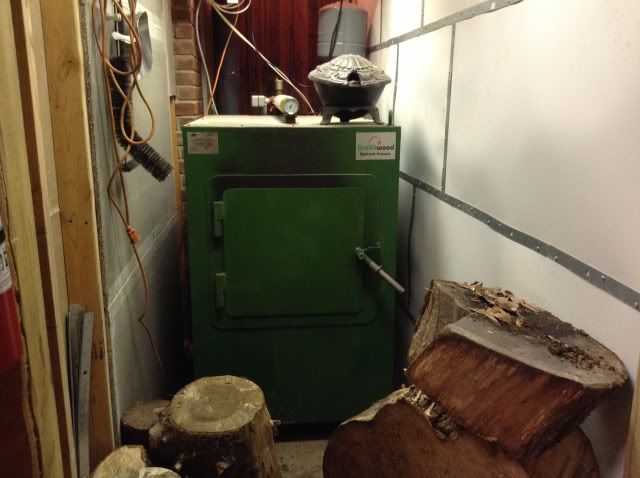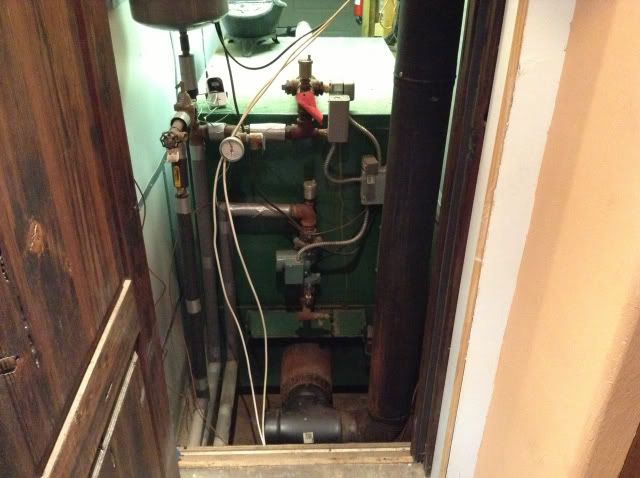Hi everyone, happy to have found this Forum, just wanted to share a couple of thoughts regarding our Greenwood 100.....I am a builder and contractor (down state NY) got the idea about 3 years ago to incorporate the Greenwood 100 into my Buderus Oil Fired Boiler...I am on year 5 of a large scale Reno on our 4000 Sqft house....(Wife is a Saint)...this past week is the first week the Greenwood has been used to heat Via our radiant.......I went through one winter with a cieling hung 32000 BTu Garage type Blower hung from my living room cieling....the Greenwood had to be fed a lot, that type of unit is anything but efficient...
A couple of things to note about this part of the country that I am in...THERE ARE NOOO WOOD BOILERS, and very few people that know anything about them......the people around here that I have been working for for 30 years want nothing to do with anything that involves extra work, they have the $ for oil or gas and just want to hit a button , actually they would rather have their housekeeper hit the button....I tell you this because the learning curve has been steep, I work with solid Plumbers, Electricians Etc,,,,and my main plumber designed the system but he used his general knowledge because he had no specific knowledge of wood boilers.....I am happy to report all is well, third full day of burning, nice white interior, very little emission, no smoke as long as I open the door to load when the damper is open...we have had some 16deg nights, I get about 6 hrs when the Greenwood is wide open....so far, I Love it.....
My reason for joining are twofold, one to thank you all for being here, I have read a lot and good solid non bias info is hard to come by....secondly I have read about many unsatisfied Greenwood owners.....it's unfortunate but I think most of the problems stem from poor install and design.....some people come on and say...." we had it professionally installed" that in my opinion means nothing, my town is full of "PROFFESSIONALS " that I would not let wash my car....These installs as you know are all site specific, very finicky, and for a very simple principle can go off the rails very quickly......we may have gotten lucky, the stars may have lined up, but so far this unit is great, it's becoming an obsession, checking temps, in the basement, out to the shed, load a massive round, middle of the night, I really love it......my oil gauge has not moved, and I am heating with wood.....All is good in the world.....Thanks Again. Maybe I will try to get some photos up.... G
A couple of things to note about this part of the country that I am in...THERE ARE NOOO WOOD BOILERS, and very few people that know anything about them......the people around here that I have been working for for 30 years want nothing to do with anything that involves extra work, they have the $ for oil or gas and just want to hit a button , actually they would rather have their housekeeper hit the button....I tell you this because the learning curve has been steep, I work with solid Plumbers, Electricians Etc,,,,and my main plumber designed the system but he used his general knowledge because he had no specific knowledge of wood boilers.....I am happy to report all is well, third full day of burning, nice white interior, very little emission, no smoke as long as I open the door to load when the damper is open...we have had some 16deg nights, I get about 6 hrs when the Greenwood is wide open....so far, I Love it.....
My reason for joining are twofold, one to thank you all for being here, I have read a lot and good solid non bias info is hard to come by....secondly I have read about many unsatisfied Greenwood owners.....it's unfortunate but I think most of the problems stem from poor install and design.....some people come on and say...." we had it professionally installed" that in my opinion means nothing, my town is full of "PROFFESSIONALS " that I would not let wash my car....These installs as you know are all site specific, very finicky, and for a very simple principle can go off the rails very quickly......we may have gotten lucky, the stars may have lined up, but so far this unit is great, it's becoming an obsession, checking temps, in the basement, out to the shed, load a massive round, middle of the night, I really love it......my oil gauge has not moved, and I am heating with wood.....All is good in the world.....Thanks Again. Maybe I will try to get some photos up.... G


